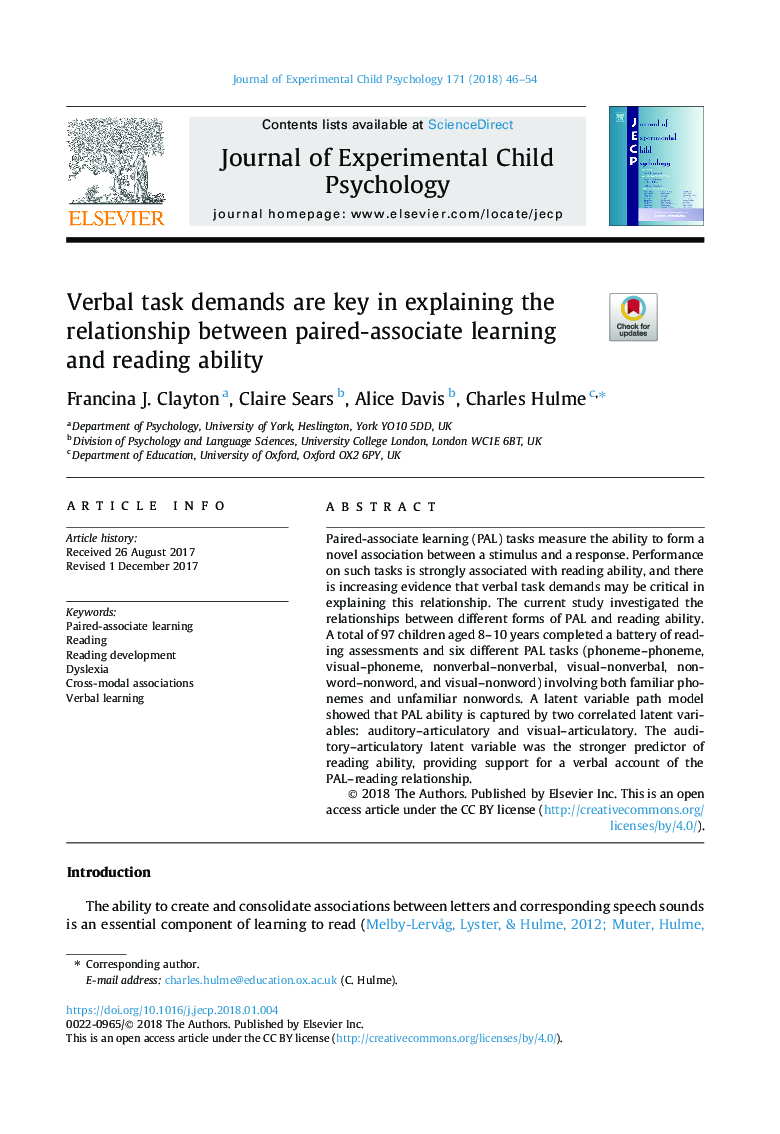| Article ID | Journal | Published Year | Pages | File Type |
|---|---|---|---|---|
| 7273956 | Journal of Experimental Child Psychology | 2018 | 9 Pages |
Abstract
Paired-associate learning (PAL) tasks measure the ability to form a novel association between a stimulus and a response. Performance on such tasks is strongly associated with reading ability, and there is increasing evidence that verbal task demands may be critical in explaining this relationship. The current study investigated the relationships between different forms of PAL and reading ability. A total of 97 children aged 8-10â¯years completed a battery of reading assessments and six different PAL tasks (phoneme-phoneme, visual-phoneme, nonverbal-nonverbal, visual-nonverbal, nonword-nonword, and visual-nonword) involving both familiar phonemes and unfamiliar nonwords. A latent variable path model showed that PAL ability is captured by two correlated latent variables: auditory-articulatory and visual-articulatory. The auditory-articulatory latent variable was the stronger predictor of reading ability, providing support for a verbal account of the PAL-reading relationship.
Related Topics
Social Sciences and Humanities
Psychology
Developmental and Educational Psychology
Authors
Francina J. Clayton, Claire Sears, Alice Davis, Charles Hulme,
